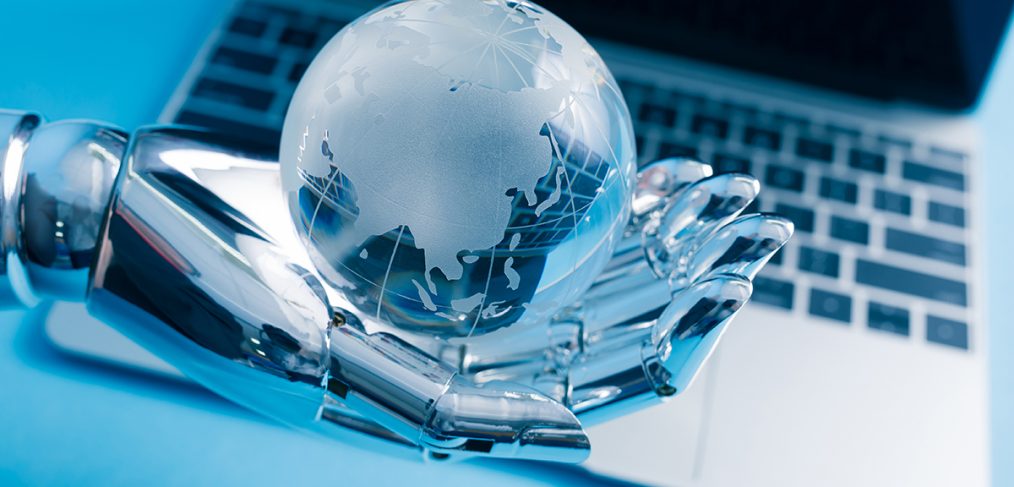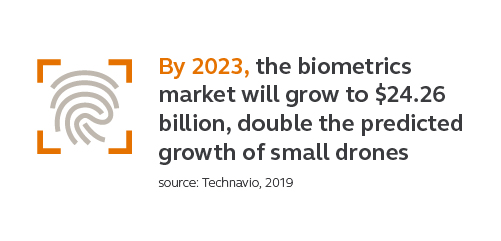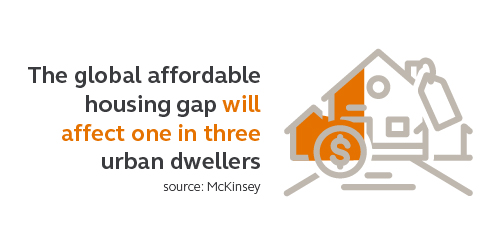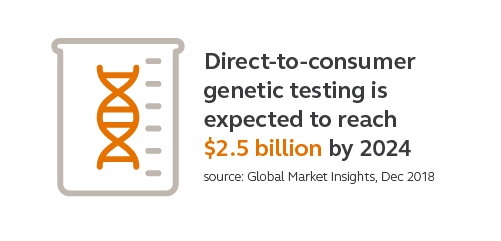
Datum: 9 Trends to Watch in 2019
Some economists predict that the U.S. economy is not going to plunge into a deep downturn this year but global markets are expected to slow down some, leaving consumer mindsets in a state of trepidation. Watching the news doesn’t help: Trade wars with China; Brexit as a game of economic and political ping pong; and the shut-down of the U.S. Federal government have all made a volatile economic landscape only more volatile.
Yet, even with these political, economic and environmental stressors, consumers are masters of distraction: an image of Kylie Jenner’s baby’s hand was just nosed out as the most liked Instagram post of 2018 by an egg. That’s not a misprint. An egg. Yes, it’s a great time to be alive.
Through these monumental digital and social disruptions, we are seeing the more successful brands evolve and transform with consumers’ shifting mindsets, which is why we believe agility will be the key strategic focus of 2019, transforming the design industry.
Here are a few more trends to keep an eye on as we kick off a new year:

1. Biometrics: invasive or inevitable? A little bit of both.
Photographic identification first appeared in the U.S. in 1876 but didn’t become widely used until the 20th century. Now, we are much closer to the once-futuristic world of Minority Report where retail stores use biometric scanning, which analyzes and measures characteristics of the human body, to identify consumers and personalize advertisements, driverless cars are the norm and voice activation controls run our homes and workplace. From wellness devices to biometric security at airports, this type of technology is gaining momentum. According to Technavio, the global biometrics market will grow to $24.26 billion through 2023, double the predicted growth of small drones, and transform nearly every industry. Marriott Hotels, for example, have already begun testing a face-scanning check-in process at their hotels; and a “biometric path” at the Dubai International Airport allows passengers to check in, complete immigration formalities and enter the Emirates Lounge. Government regulations will try to balance consumer privacy with security. But, ultimately, our demands for more security bring with it technology asking for more of our personal information.
2. Cognitive Neuroscience: Taking the fun out of guessing
People only tell you what they think they think – not what they actually think. Consumers spend time passively consuming information, and we are often overwhelmed by the amount of data and choices presented to us. Our highly saturated digital ecosystem has become exhausting and overwhelming. Scarcity is the new exclusivity and people are trying to live more minimally, demanding that technology do most of the work for them. For example, if you search “black shirt” on Google, there are about 6,210,000,000 results. While artificial intelligence helps to narrow those results by using things like previous purchase behavior and search history (maybe even listening in to our conversations without our knowledge or tracking our eye movements), these activities are limited to data gathered by conscious thoughts. Cognitive neuroscience is a way to get deeper knowledge about the subconscious, allowing us to absorb stronger memories and, ultimately, influence conversion rates. Like an episode of Black Mirror, cognitive neuroscience is a way to tap the untapped and filter out the noise to provide consumers what they actually need, not what they think they need.
3. Social Currency, Brands & Trust: The power of the consumer
There are growing mainstream demands among consumers for brands to have a social and ethical compass – and consumers are more engaged than ever. We live in a ”always on” state where a crisis is amplified so quickly that brands have little time to contain the damage. We’ve seen a rise in social currency movements around the world for consumers to boycott certain retailers who are found to have acted inappropriately or have given money to a cause, or candidate, that consumers are against. Brands like Nike and Gillette have released controversial advertisements taking a stand on hotly debated social issues – however, for Nike, this calculated gambit paid off, with sales rising 31% after the release of the ad.
We know that our personal data is being collected from the devices that keep us so well-connected. In turn, brands are more knowledgeable and calculated in their messaging and business decisions. While many of the industry’s leaders have tried to strike a balance between gathering data to improve aspects of our lives and protecting consumers personal information, it is unclear if they’re succeeding. Facebook made millions by selling user data to companies like Google – but where do consumers fit in? If we’re giving up our personal information (sometimes unknowingly), what do we get in return? Consumers expect brands to align with their values, protect their data and use the data they collect to their benefit…or they will simply tighten their wallets or log off.
4. Tech Companies & Real Estate: Strange bedfellows
The concept of “staying in your lane” will continue to be tested as high-tech and social media companies disrupt and infiltrate as many industries as they can, including real estate. Sidewalk Labs, an urban innovation subsidiary of Google, is creating a smart city in Toronto. Robots deliver mail and trash via underground tunnels; and sensors throughout the 12-acre development measure things like air quality, traffic and building occupancy. WeWork, which started off as a coworking company but has since become the largest private office tenant in Manhattan, launched into building management and workplace optimization strategy, disrupted the multifamily housing industry with WeLive, opened a school called WeGrow, and recently moved into wellness by opening Rise by We gyms and investing in a Superfood start-up. Whew. No wonder why they are rebranding into We Company. And Amazon, which started off selling books online, well, they can really sell you almost anything now. So far beyond their original concepts, these tech companies don’t look at an idea in singular terms—they evolve their brands as consumers change and continually make variations to their strategies and business plans.

5. Regeneration & Resiliency: More us, less stuff
If you haven’t yet seen the climate change reports published the United Nations Intergovernmental Panel on Climate Change, you have about 12 years to get your emergency preparedness plan together. We’ve seen many countries fall behind in environmental leadership and aspirations, so businesses are now taking charge of climate change. Along with aggressive initiatives to improve the resiliency of cities, we can expect zoning changes to make waves in 2019. As the cost of living continues to rise, the global affordable housing gap is projected to affect one in three urban dwellers, or about 1.6 billion people. In aggressive plans to tackle the housing crisis, Governor of California Gavin Newsome has proposed withholding transportation funds from local governments that fail to meet new housing production targets. San Francisco Mayor London Breed has proposed a $300 million bond to pay for affordable housing. Major technology companies, like Microsoft, are starting to understand their impact on local communities are pledging money to tackle the affordable housing crisis. Companies and governments that recognize these resource insecurities and build more resilient cities are going to be at the forefront of innovation and these changes will have a positive impact on future economic growth.
6. Voice Recognition: Universal communication and commands
Voice technology is currently having a moment – and we expect it will penetrate even more industries in 2019. As the cost of the technology decreases, access and use will skyrocket. Deloitte Global predicts that the industry for smart speakers will be worth US$7 billion in 2019. Simultaneous language translations, innovations for the hearing impaired and universal voice recognition software will make voice technology more inclusive and part of more than our smart home devices. Expect Alexa for Business to shape the workplace, in-room voice commands in our hotels, and car dashboards that verbally confirm purchases.
7. Supersonic Travel: Making business move faster
Boom Technology’s supersonic plane dubbed the “Son of Concorde” is set to take off later this year. Once the plane is in commercial service, routes from New York to London, Paris to Montreal and Madrid to Boston will take less than four hours – half the time of conventional jets. Uber has partnered with Boeing to take its car-sharing service above ground. In an effort to take travel out of this world, Virgin Galactic made history last year when they launched SpaceShipTwo. With the expected rise in smart airports with added biometric security features, hopefully these innovations will make the entire travel process less stressful and more streamlined. Fingers crossed. There are efforts to move people more quickly but also products. We’re seeing disruptions in the logistics industry with autonomous trucks and ships and drone deliveries, getting things to us more efficiently. There will continue to be this convergence of people, places and processes and automation – get your bags packed and buckle in.

8. Rise of Genetics: Hyper-personalization
In the past, mass customization was almost impossible. Sizes, treatments and formulas were standard. 3D printing and augmented reality have helped get us closer to mass customization for apparel and products, like earbuds. However, this type of mass customization only skims the surface. The rise of genetic testing is the future of healthcare and skincare research – and with it, more personalized and tailored products for consumers. As consumer awareness of the potential for early diagnoses of genetic diseases and more personalized consumer products continues to grow, the global direct-to-consumer genetic testing market is expected to reach $2.5 billion by 2024. Genetics also brings the concept of prevention as a strategy for tackling the rising cost of healthcare. We know that people may be predisposed to certain medical diseases, however, lifestyle changes can play a major factor if they will develop that disease later in life. Which is why it’s so important to have this data about our bodies early on so that we can work on customized prevention plans. Wearables, at-home kits and online tests also allow for consumers to deal with embarrassing health issues in the comfort of their own homes, manage their diseases more efficiently, get personalized vitamins based on deficiency tests and a custom skincare routine that best fits the individual’s cellular profile.
9. Haptics: The untapped virtual sensory experience
Global ecommerce sales are on the rise; however, most consumers prefer shopping in-store. One of the main ingredients lacking in the online shopping experience is that consumers are unable to touch and feel the product before they make a purchase. Does the shirt feel comfortable against their skin, is it durable enough? There has been a glaring gap in this sensory experience – that is, until the rise of haptics technology, which relies on sensors, pressure and signals to replicate the signals in the human nervous system when we touch something. Recently revealed at the CES 2019 show, the Teslasuit is a full-body haptic suit that enhances virtual and augmented reality experience through the synergy of haptics, motion tracking and biometry. To push this technology even further into mass adoption, Google recently invested in haptic technology to develop new consumer products. Merging the physical with the digital experience is becoming more important for an authentic, sensory experience.
These technological innovations are making us more efficient, mobile and resourceful. However, while automation is replacing some jobs, technology will never completely replace humans. Artificial intelligence is unable to perform certain tasks like creative thinking, understanding context and providing customer service. Robots can check you into a hotel; however, they aren’t able to discern human needs and feelings. A humanistic approach will continue to create stronger brand touchpoints. As businesses make large investments in digital transformations to stay competitive, it’s important to find a balance between technology and human intelligence. Training, continued education and providing a creative space to brainstorm and strategize are ways for companies to invest in empowering their people while making complementary digital improvements. There is a future where we can peacefully co-exist.
What other trends or innovations are you tracking this year? Please comment below and we will write another Datum exploring that topic further.

This is a really fascinating article, especially for someone who is in “Human” Resources. I’m curious to see how all this technology will ultimately affect my field. Thank you for sharing Kristin!